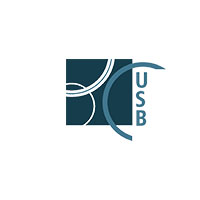Wen, Hui-Chung
(2025).
Investigations of the In vitro and In vivo Metabolism of a Synthetic C20 Keto Steroid via Chemical Synthesis, Chromatography, and High-Resolution Mass Spectrometry.
PhD thesis, Universität zu Köln.

|
PDF
Thesis_publication_Wen.pdf Download (18MB) |
Abstract
This study investigates the in vitro and in vivo metabolism of the synthetic steroid S42, a novel selective androgen receptor modulator (SARM). Its pharmaceutical potential triggered concerns towards illicit use in sports doping. The fragmentation behavior of S42 was examined to support the development of a qualitative and quantitative doping control method based on gas chromatography–electron ionization high-resolution mass spectrometry (GC-EI-HRMS). Chemically synthesized S42, S42-d4, S42-d7, and their trimethylsilyl (TMS) derivatives were analyzed to characterize key fragment ions found of S42. In vitro assays using human liver microsomes and the S9 fraction, a supernatant from homogenized liver tissue, along with in vivo rat studies, were conducted to detect metabolites. Many product ions from TMS-metabolites could be identified as they matched those of TMS-S42, with extra TMSO groups, suggesting the actual hydroxylation levels in S42. Comparison of the S42 metabolites and the deuterated metabolites by in vitro experiments allowed localization of the oxidation position. To confirm metabolite structures, S42-C20-OH, S42-C6β-OH, and S42-C7α-OH were synthesized, TMS-derivatized, and GC-MS analyzed as reference compounds for comparison of chromatograms and spectra. In vitro and in vivo phase II metabolites were further analyzed via liquid chromatography–electrospray ionization high-resolution mass spectrometry (LC-ESI-HRMS) in negative mode, with parallel reaction monitoring (PRM) to detect glucuronide and sulfate adducts. In vitro results indicate that mono-hydroxylation and reduction reactions dominate phase I metabolism, followed by glucuronidation in phase II metabolism. In contrast, triple hydroxylated metabolites were more abundant in rat urine. Sulfate conjugates exhibited stronger LC-MS signals than glucuronides, showing a higher detectability.
| Item Type: | Thesis (PhD thesis) | ||||||||||||
| Creators: |
|
||||||||||||
| URN: | urn:nbn:de:hbz:38-788813 | ||||||||||||
| Date: | 2025 | ||||||||||||
| Place of Publication: | Cologne | ||||||||||||
| Language: | English | ||||||||||||
| Faculty: | Faculty of Mathematics and Natural Sciences | ||||||||||||
| Divisions: | Faculty of Mathematics and Natural Sciences > Department of Chemistry > Institute of Organic Chemistry | ||||||||||||
| Subjects: | Natural sciences and mathematics Chemistry and allied sciences |
||||||||||||
| Uncontrolled Keywords: |
|
||||||||||||
| Date of oral exam: | 22 August 2025 | ||||||||||||
| Referee: |
|
||||||||||||
| Refereed: | Yes | ||||||||||||
| URI: | http://kups.ub.uni-koeln.de/id/eprint/78881 |
Downloads
Downloads per month over past year
Export
Actions (login required)
 |
View Item |
